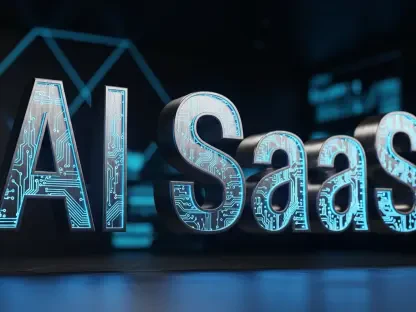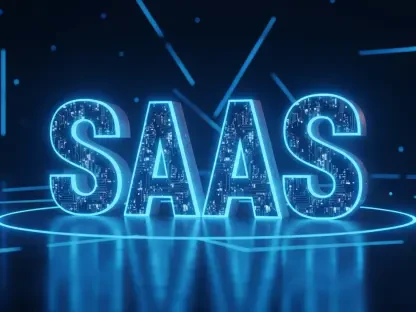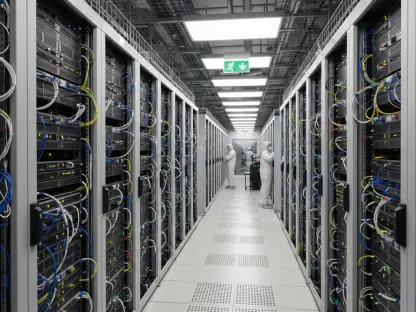In packed halls at Paris Expo, a quiet shift became impossible to ignore as AI turned DevSecOps from fast to foreseeing, with zero-trust containers moving security from a checklist to an operating principle across the software lifecycle. The conversations and demos on Day 1 showed a field crossing a threshold: pipelines are learning from their own history, Kubernetes is acting as the enforcement plane, and compliance is built into images rather than bolted on at the end.
The stakes felt distinctly cross-industry. Retailers stressed uptime and payment security, media companies worried about release velocity, and critical infrastructure providers emphasized resilience and evidence. Despite different priorities, the common answer was the same: predictive DevSecOps—where data from commits, defects, and runtime becomes fuel for models that flag risk earlier, steer testing, and keep policy enforcement consistent across clusters and clouds.
Industry Snapshot From Tech Show Paris
Predictive DevSecOps came into focus as a pragmatic evolution rather than a moonshot. Teams are not discarding automation; they are aiming it. Instead of throwing more tests and more gates at pipelines, they are letting models sift through code changes and telemetry to surface what is most likely to fail, what is most likely to break compliance, and what warrants immediate attention. That reordering of effort is cutting waste, shortening feedback loops, and, in many cases, reducing incidents.
Containers and Kubernetes sat at the center because they serve as the control plane for both deployment and security. When policy becomes code and images carry embedded controls, the environment standardizes, drift drops, and multi-cloud deployments stop feeling like bespoke projects. The result is not only a faster path to production but also a more auditable one, which matters for organizations living under GDPR obligations, SOC 2 commitments, and sector rules that now expect continuous, not periodic, proof.
Market Analysis And Performance Signals
Momentum gathered around several converging trends that push pipelines beyond automation and into anticipation. Predictive testing stood out: models trained on historical defects and runtime patterns identify hot spots, simulate edge cases, and prioritize tests to maximize coverage with fewer cycles. Security got the same treatment. Scanners integrated with SBOMs learned to identify the dependencies most likely to introduce risk, while continuous observability fed anomaly detectors tuned to each service’s normal behavior.
Equally notable was the operationalization of zero-trust. Principle of least privilege, once a policy document, showed up as runtime reality: Kubernetes admission controllers enforced rules; OPA and Kyverno policies shaped deployments; and AI-assisted detectors monitored drift, unknown processes, and privilege escalations. Observability ceased to be a passive dashboard and became a decision engine, wiring telemetry to auto-remediation routines that fix routine problems before users feel them.
Trends Reshaping Pipelines
Compliance started moving into the base image. Security-by-default templates, curated with controlled packages and signed artifacts, replaced ad hoc containers prone to drift. Teams demonstrated golden images that carried identity, logging baselines, and policy hooks out of the box. Policy-as-code then enforced everything from image provenance to network segmentation, applying the same controls in every cluster without manual coordination.
This approach also rebalanced the “shift-left” narrative. Security still began early, but it no longer stopped there. Runtime defense with Falco-style detectors, eBPF-based visibility, and privilege controls formed a second and third line. AI bridged the stages, correlating build-time issues with runtime symptoms so that fixes addressed root causes rather than symptoms. Decathlon’s experience illustrated the model: AI-driven test selection and container-embedded controls doubled pipeline speed while halving compliance-related delays.
Data, Benchmarks, And Projections
Adoption signals aligned with the buzz. Vendors reported rising attach rates for AI-enabled CI/CD add-ons, increased usage of Kyverno and OPA policies, and broader deployment of runtime defense in container estates. Performance data echoed the trend: mean time to recovery fell where anomaly detection fed auto-remediation; change failure rates dropped when predictive tests prioritized fragile zones; and test coverage became more efficient as redundant suites were trimmed without losing confidence.
Return on investment surfaced in areas that matter to boards. Fewer failed releases cut cloud waste, and compliance cycle times shortened once evidence pipelines automated audits. Projections pointed to mainstream predictive testing by late 2025, with platforms converging into unified views that cover scanning, policy, runtime, and observability. Talent demand followed suit: secure containerization, AI observability, and incident automation became standout skills for hiring and upskilling.
Compliance And Governance Landscape
Standards anchored the conversation, not as hurdles but as design guides. NIST 800-series practices and zero-trust architecture patterns underpinned identity, segmentation, and continuous verification. ISO/IEC 27001 and SOC 2 shaped controls and evidence, while CIS Benchmarks and Kubernetes Hardening guidance informed baselines. For payment workloads, PCI DSS requirements mapped cleanly to policy-as-code, ensuring encryption, least privilege, and logging never depended on human diligence.
Software supply chain security gained teeth through SBOMs, SLSA levels, and artifact signing. Provenance attestations—signed and attached to build outputs—allowed clusters to accept only what the pipeline had verified. Automated evidence capture became the missing link, turning policy decisions and build metadata into records auditors can trust without last-minute document scrambles. That shift reduced not only audit stress but also the risk of manual oversights.
Adoption Challenges And Risk Mitigation
The move to predictive DevSecOps is not frictionless. Models need clean, representative data; otherwise they misread signals and produce false positives or negatives. Drift remains a reality as services evolve. Legacy systems complicate integration, and multi-cloud policy harmonization adds another layer of complexity. Moreover, too much reliance on automation can create blind spots if escalation paths and ownership are unclear.
Mitigation patterns are emerging. Model auditing at regular intervals, canary deployments for policy changes, and layered controls from build to runtime balance speed with safety. Runbooks-as-code knit human judgment into automated flows so that critical paths still involve review. Secrets management must adapt to ephemeral environments, using short-lived tokens and strong workload identity to reduce exposure. And above all, a culture that values explainability keeps AI decisions legible to engineers and auditors alike.
Tooling, Ecosystems, And Economic Signals
Open-source projects continued to lead as common building blocks. Trivy and Clair provided image scanning; Kyverno and OPA enforced policies; Falco and eBPF tools watched runtime behaviors. Hyperscalers and managed platform providers integrated these pieces into service offerings, promising simpler adoption without locking out community innovation. Security vendors layered commercial hardening on top, adding governance, cross-cloud views, and enterprise support.
Economically, the story was about leverage. Smaller teams reported managing larger estates because pipelines self-prioritized, policies self-enforced, and remediation routines handled routine toil. Cost controls benefited from fewer failed pushes and better capacity usage. Decathlon’s results—2x pipeline speed, 50% fewer compliance delays—served as a practical benchmark, signaling that speed and rigor are not trade-offs when designed into the platform.
What Changes On The Ground
Daily work changed in visible ways. Developers received targeted feedback tied to the commits most likely to fail tests or break policies, reducing context switching. Platform engineers treated policies as reusable modules, with templates driving consistent setup across namespaces and clusters. SRE and security teams shared dashboards where risk, performance, and compliance were presented in business terms, allowing decisions that aligned technical health with economic outcomes.
Training also evolved. Practitioners leaned into tool-agnostic skills: writing clear policies, validating SBOM accuracy, interpreting model outputs, and codifying runbooks. Certifications followed the same path, favoring hands-on exercises that mirror real pipelines. The goal was simple: make the next incident easier to prevent, the next audit easier to pass, and the next optimization easier to prove with metrics.
Signals To Watch Next
Several markers will reveal how quickly predictive DevSecOps becomes the norm. First, whether predictive test selection is embedded as a standard feature in CI systems rather than an optional add-on. Second, whether artifact signing and provenance policies become default in managed registries and cluster admission paths. Third, whether observability platforms provide built-in auto-remediation blueprints that teams can adopt with minimal tuning.
Just as important are the human indicators. If SRE and AppSec roles converge around shared objectives and shared tooling, the cultural shift will be underway. If audit cycles compress without a spike in exceptions, governance alignment will be real. And if smaller teams start taking on workloads once considered out of reach, the economic case will be settled.
Outlook And Recommendations
The event showed that predictive DevSecOps had matured from concept to operating model. The most effective paths began with narrow pilots—predictive testing on critical services, golden images for the most regulated workloads, and automated attestations for high-traffic pipelines—then scaled across product lines. Platform consolidation reduced tool sprawl, while telemetry foundations made AI insights trustworthy and actionable. The organizations that made the biggest leaps treated zero-trust as an execution pattern, not a slogan, and built evidence capture into every step.
Next steps were clear. Leaders should align on a platform baseline that unifies scanning, policy, observability, and runtime defense under a single risk view. Practitioners should standardize secure base images, require signed artifacts at admission, and stage auto-remediation behind clear escalation rules. Model oversight, including periodic drift checks and explainability reviews, should stay mandatory for high-impact decisions. Investments would pay off fastest in AI-driven observability, supply chain integrity, zero-trust orchestration, and developer experience that surfaces the right fix at the right moment.
The report closed on a pragmatic note: predictive, AI-augmented DevSecOps had proven to accelerate delivery while raising the security bar, and real-world results such as Decathlon’s made the benefits measurable. With governance built into code and containers, and with runtime verification as a constant, the pathway toward safer, faster, and more accountable software releases had been established.









